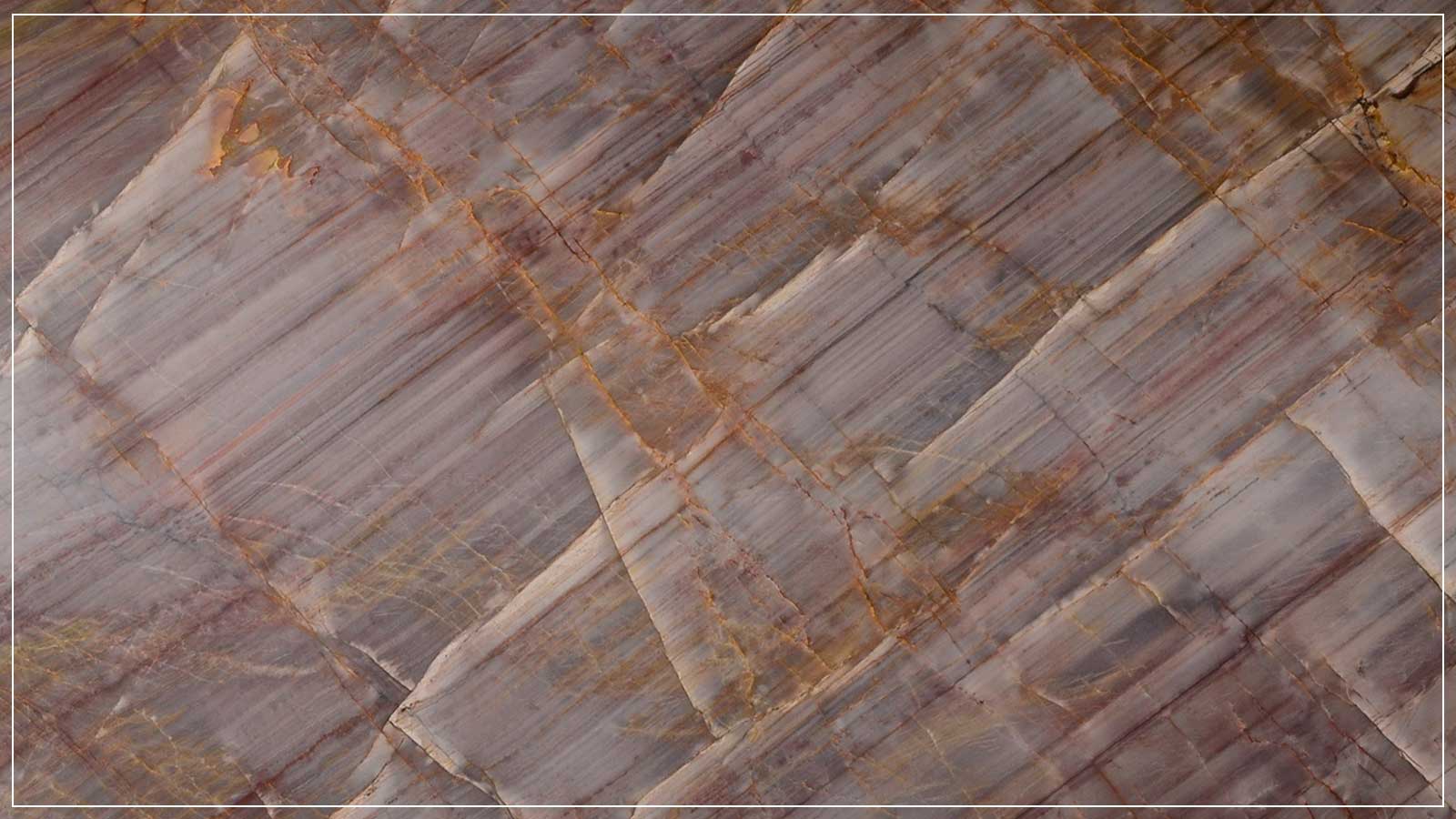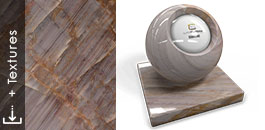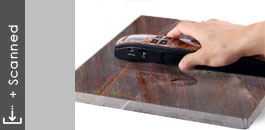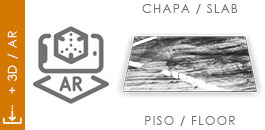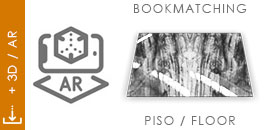Tamarino: A Marvel of Brazilian Natural Quartzite
Introduction
Tamarino quartzite is a stunning natural stone originating from Brazil, celebrated for its exotic beauty and superior technical properties. This stone has gained popularity in architectural and interior design projects worldwide. In this comprehensive text, we will explore the characteristics, uses, extraction methods, care, maintenance, and installation of Tamarino quartzite. This document aims to provide detailed information, ensuring a complete understanding of this exceptional material.
Characteristics of Tamarino Quartzite
Color and Pattern
Tamarino quartzite displays a unique and varied color palette, predominantly featuring shades of lilac, purple, and gray. These primary colors are beautifully interspersed with golden veins that traverse the stone’s surface, creating a striking and sophisticated appearance. The interaction of these colors results in a visual spectacle that can transform any space into a luxurious retreat.
Composition
As a metamorphic rock, Tamarino quartzite is primarily composed of quartz. This high quartz content gives the stone exceptional hardness and durability. Unlike other natural stones, the metamorphic process that forms quartzite enhances its strength, making it resistant to scratches, heat, and other forms of wear and tear. This composition ensures that Tamarino quartzite maintains its beauty and functionality for many years.
Texture
The texture of Tamarino quartzite is dense and granular, often featuring a polished finish that enhances its natural beauty. This polished surface not only increases the stone’s aesthetic appeal but also makes it easier to clean and maintain. The granular texture adds a tactile quality to the stone, providing a pleasing contrast to its visual elegance.
Uses of Tamarino Quartzite
Wall and Floor Cladding
One of the primary uses of Tamarino quartzite is in wall and floor cladding. Its durability and weather resistance make it an excellent choice for both indoor and outdoor applications. When used as wall cladding, Tamarino quartzite creates a visually stunning backdrop that adds depth and texture to any space. For flooring, its hardness ensures it can withstand heavy foot traffic without losing its luster.
Countertops
Tamarino quartzite is a popular choice for kitchen and bathroom countertops due to its heat and scratch resistance. Its beautiful color variations and patterns make each countertop unique, adding a touch of elegance to these functional spaces. Additionally, the stone’s resistance to stains and ease of cleaning make it a practical choice for countertops.
Decorative Elements
Beyond its functional uses, Tamarino quartzite is also employed in various decorative elements. Its exotic beauty makes it ideal for use in accent walls, fireplaces, and other architectural features. In commercial settings, it can be used to create impressive reception counters, bar tops, and other focal points that leave a lasting impression on visitors.
Extraction of Tamarino Quartzite
Location
Tamarino quartzite is extracted from the southern region of Bahia, Brazil. This area is known for its rich quartzite deposits, making it a prime location for the extraction of high-quality stone. The unique geological conditions of this region contribute to the distinctive color and pattern variations observed in Tamarino quartzite.
Sustainable Extraction Methods
The extraction of Tamarino quartzite follows methods designed to minimize environmental impact and ensure sustainability. Modern techniques are employed to reduce waste and preserve the surrounding ecosystem. Efforts are also made to rehabilitate quarry sites after extraction, promoting environmental conservation and sustainability.
Care and Maintenance of Tamarino Quartzite
Cleaning
To maintain the shine and integrity of Tamarino quartzite, regular cleaning with warm water and a neutral detergent is recommended. Avoid using acidic or abrasive cleaning products, as they can damage the stone’s surface. A soft cloth or sponge should be used to gently clean the surface, ensuring it remains free of dust and debris.
Sealing
Periodic sealing is crucial to protect Tamarino quartzite from stains and facilitate cleaning. A high-quality sealer should be applied according to the manufacturer’s instructions, typically every 6 to 12 months. Sealing helps maintain the stone’s natural appearance and enhances its resistance to moisture and staining agents.
Regular Maintenance
Routine inspection of the quartzite surface is important to identify any potential damage and perform necessary repairs. Any chips or cracks should be addressed promptly to prevent further deterioration. Using mats or trivets under hot pots and pans can also help protect the surface from thermal shock.
Installation of Tamarino Quartzite
Surface Preparation
Proper surface preparation is essential for the successful installation of Tamarino quartzite. The substrate must be clean, level, and adequately prepared to ensure a strong bond with the stone. Any existing coatings or residues should be removed, and the surface should be primed as necessary.
Use of Appropriate Adhesives
Using the correct adhesives and mortars is crucial to ensuring a durable installation. Specialized products designed for use with quartzite should be chosen to provide a secure and lasting bond. Following the manufacturer’s guidelines for mixing and application will help achieve the best results.
Joint Sealing
After installation, sealing the joints with an appropriate material is essential to prevent water and dirt penetration. This step helps maintain the integrity of the installation and prolongs the lifespan of the quartzite surface. Regular inspection of the joints and resealing as needed will ensure ongoing protection.
Conclusion
Tamarino quartzite stands out as an exceptional choice for those seeking high-quality and aesthetically pleasing materials for architectural and interior design projects. Its combination of strength, durability, and natural beauty makes it a versatile option for a variety of applications, from wall and floor cladding to countertops and decorative elements. Extracted sustainably from the rich deposits in southern Bahia, Brazil, Tamarino quartzite embodies elegance and environmental responsibility. With proper care and maintenance, this exquisite stone can maintain its stunning appearance and functionality for many years, making it a valuable investment for any project.
Exploring Tamarino Quartzite in Detail
Physical and Chemical Properties
Hardness and Strength
One of the main reasons Tamarino quartzite is so highly valued is its exceptional hardness. On the Mohs hardness scale, quartzite generally ranks between 7 and 8, meaning it is harder than most natural stones, including marble and limestone. This hardness gives Tamarino a remarkable resistance to scratches and abrasions, making it ideal for high-traffic areas and surfaces that require extra durability.
Heat Resistance
Tamarino quartzite also has high heat resistance, making it an ideal choice for kitchens and other areas where contact with high temperatures is frequent. The stone’s ability to withstand heat without damage means that hot pots and pans can be placed directly on the surface, a significant advantage for kitchen countertops.
Water Absorption and Porosity
While quartzite is a dense stone, it still possesses some porosity. The water absorption rate of Tamarino quartzite is relatively low, making it resistant to stains and water damage. However, to maximize its water resistance and ease of maintenance, regular sealing is recommended.
Aesthetic and Functional Benefits
Unique Appearance
Each piece of Tamarino quartzite is unique, with patterns and veining that vary from slab to slab. This exclusivity ensures that every project using Tamarino is truly individual and special. The combination of soft colors and dramatic veining creates an aesthetic that can be both subtle and impactful, suitable for a variety of design styles.
Versatility of Application
The versatility of Tamarino quartzite allows it to be used in a wide range of applications. In residential settings, it can be seen in kitchens, bathrooms, floors, walls, and even custom furniture. In commercial contexts, its durability and beauty make it ideal for lobbies, receptions, and other areas that seek to make a strong visual impression.
Compatibility with Other Materials
Tamarino quartzite harmonizes well with other construction and design materials. It can be paired with wood, metal, glass, and other types of stone to create interesting and dynamic visual compositions. Its ability to complement a wide variety of materials makes it a flexible choice for designers and architects.
Sustainability and Environmental Impact
Responsible Extraction Practices
The extraction of Tamarino quartzite is conducted with a significant focus on sustainability and minimizing environmental impact. Extraction practices are designed to reduce waste and preserve the surrounding ecosystem. Additionally, quarries are subject to strict regulations to ensure that extraction is carried out responsibly and sustainably.
Quarry Rehabilitation
After extraction, quarry sites are subjected to rehabilitation processes to restore the natural landscape. This may include replanting native vegetation and implementing measures to prevent erosion and other negative environmental impacts. These practices help ensure that quartzite extraction has minimal long-term impact.
Waste Reduction
Modern cutting and processing technologies are used to maximize the use of extracted material and minimize waste. These technologies allow even smaller pieces of quartzite to be used effectively, contributing to the efficiency and sustainability of the extraction operation.
Notable Projects with Tamarino Quartzite
Residential Applications
In homes, Tamarino quartzite has been used in a variety of impressive projects. In kitchens, it is often chosen for countertops and islands due to its durability and beauty. In bathrooms, its durability and resistance to moisture make it ideal for countertops and shower cladding. Homeowners also appreciate Tamarino in flooring and walls, where its unique aesthetic can truly shine.
Commercial Environments
In commercial environments, Tamarino quartzite is used to create standout spaces that impress visitors and clients. Hotel lobbies, office reception areas, and upscale restaurants are just a few places where Tamarino can be found. Its durability ensures that these spaces maintain a pristine appearance even with heavy use.
Interior Design Projects
Interior designers value Tamarino quartzite for its ability to add a touch of luxury to any space. It can be used to create dramatic fireplaces, accent walls, and even custom furniture pieces such as tables and countertops. The versatility and beauty of Tamarino allow it to be incorporated into a wide range of design styles, from modern to classic.
Processing and Finishing Technologies
Cutting Techniques
The processing of Tamarino quartzite begins with precise cutting techniques that ensure each slab is of the highest quality. Advanced cutting machines are used to achieve clean and accurate cuts, minimizing waste and maximizing the use of the material. These techniques also allow for the production of custom-sized slabs to meet the specific needs of each project.
Surface Finishes
A variety of surface finishes can be applied to Tamarino quartzite to enhance its aesthetic and functional properties. Polished finishes are popular for their shine and ease of maintenance, while honed or brushed finishes can provide a softer, more textured appearance. The choice of finish depends on the intended use and design preferences.
Additional Treatments
Additional treatments, such as the application of resins or sealers, can be used to further enhance the durability and appearance of Tamarino quartzite. These treatments help protect the stone from stains, scratches, and other types of damage, ensuring that it maintains its beauty for many years.
Long-Term Maintenance
Regular Inspections
Long-term maintenance of Tamarino quartzite involves regular inspections to identify and address any potential issues. Minor damages, such as chips or cracks, should be repaired promptly to prevent them from becoming larger problems. Regular inspections also ensure that sealing and other protective treatments are functioning properly.
Cleaning Routine
A proper cleaning routine is essential to maintaining the appearance of Tamarino quartzite. Regularly cleaning the surface with warm water and a neutral detergent will help remove dust and debris, keeping the stone looking new. Stone-specific cleaning products can also be used to tackle tougher stains.
Resealing
Periodic resealing is an important part of maintaining Tamarino quartzite. Sealers help protect the stone from stains and water damage and should be reapplied according to the manufacturer’s recommendations. This process is relatively simple and can be done by professionals or by the homeowner.
Conclusion
Tamarino quartzite is an exceptional choice for projects seeking to combine beauty, durability, and environmental responsibility. With its wide range of applications and superior properties, it offers a versatile solution for designers, architects, and property owners. Through sustainable extraction practices and advanced processing techniques, Tamarino not only enhances the aesthetic value of any project but also promotes a conscious and responsible approach to the use of natural resources. With proper care and maintenance, Tamarino quartzite can continue to beautify and serve for many years, making it a valuable investment for any endeavor.
The use of lighting causes dramatic translucent effects on this beautiful exotic natural stone.

Want to know more about this and other SuperClassico materials?
Ask our AI your question here!
BookMatching
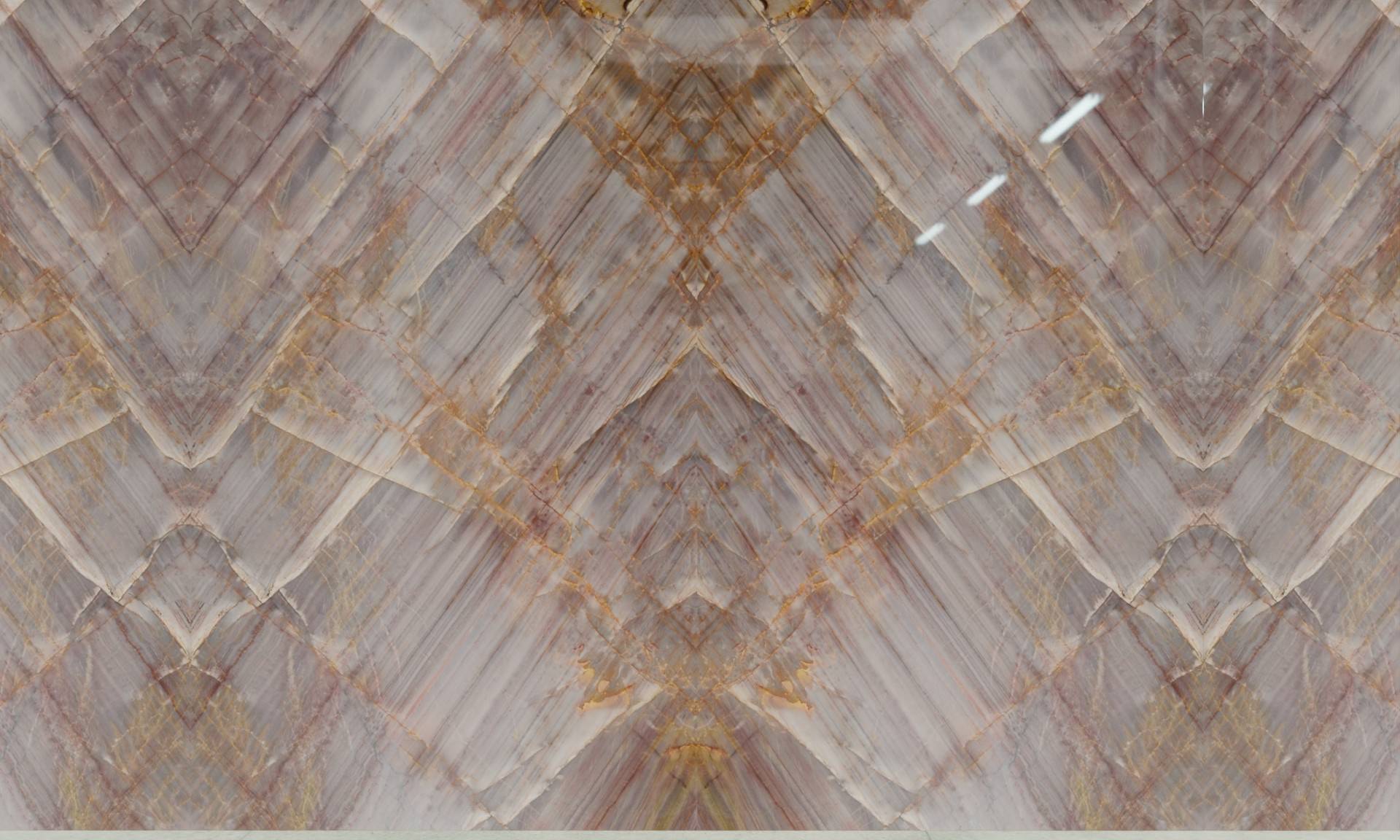 Vertical
Vertical Horizontal
HorizontalFor Designers and Architects
| PETROGRAPHY CLASSIFICATION | QUARTZITE | |
| NORMA | TESTS | RESULTS |
| ABNT NBR 12766 | Water Absorption | – % |
| ABNT NBR 12766 | Apparent Dry Density | – kg/m³ |
| ABNT NBR 12767 | Compressive Strength83 | – mpa |
| ABNT NBR 12763 | Flexural Strength | – mpa |
| Abrasion Strength | – (cm²/cm³) | |
To simulate how a particular material would look as a floor, tabletop, or countertop in your home, use Augmented Reality technology on your smartphone. It’s easy! Just click on the “View in your space” button and you’ll be able to see the virtual object in your real environment. Try it now!
Click on the CARDS below and choose different options to simulate the material with AR in your environment through your Smartphone’s camera.
Classification
Type: QUARTZITE
About
Tamarino – A Natural Exotic Stone by SuperClássico Natural Stones
Composition
Surface Finishings
Polished
It is the “shiny” surface that results in the plate when receiving the complete finish, that is, until the last grain. Depending on its composition, the polished material may have a higher or lower brightness intensity.
Brushed
It is the resultant surface in the sheet when it receives roughing treatment performed by steel brushes or synthetic materials. Different brushing models can be executed, with greater roughness, medium and few.
Soft Leather
It is the resultant surface in the sheet when it receives roughing treatment performed by steel brushes or synthetic materials. Carried out with a brush of low roughness, which gives it a lightly textured look like fabric.
Flamed
It is the resultant surface in the plate when it receives heat treatment (burned with torch specially developed for the function) that takes out small flakes of the same, making the surface slightly irregular producing the impression that it is rustic.
Honed
It is the resultant surface on the sheet when receiving abrasive grinding wheels up to the grain 120. This grain defines the surface finish limit either as anti-slip or even for the application of resin and subsequent polishing.
Leather Finish
It is the resultant surface in the sheet when it receives roughing treatment performed by steel brushes or synthetic materials. Depending on the type of brushes used you can still reproduce in some materials a surface with a design similar to natural leather.

